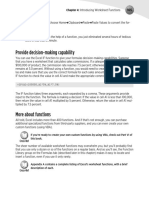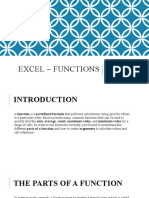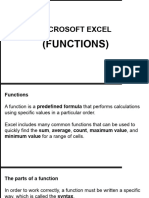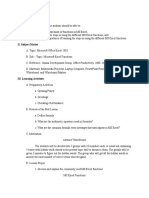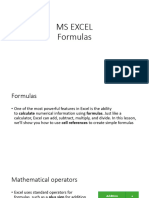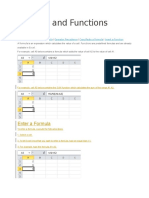0% found this document useful (0 votes)
15 views2 pagesExcel Formulas - Functions
The document provides an introduction to Excel functions, explaining that a function is a predefined formula used for calculations. It details the syntax of functions, which includes an equals sign, function name, and arguments, and illustrates how to work with both individual cells and cell ranges. Examples of functions like SUM and AVERAGE are provided to demonstrate how to use arguments correctly.
Uploaded by
wba59179Copyright
© © All Rights Reserved
We take content rights seriously. If you suspect this is your content, claim it here.
Available Formats
Download as PDF, TXT or read online on Scribd
0% found this document useful (0 votes)
15 views2 pagesExcel Formulas - Functions
The document provides an introduction to Excel functions, explaining that a function is a predefined formula used for calculations. It details the syntax of functions, which includes an equals sign, function name, and arguments, and illustrates how to work with both individual cells and cell ranges. Examples of functions like SUM and AVERAGE are provided to demonstrate how to use arguments correctly.
Uploaded by
wba59179Copyright
© © All Rights Reserved
We take content rights seriously. If you suspect this is your content, claim it here.
Available Formats
Download as PDF, TXT or read online on Scribd
/ 2











